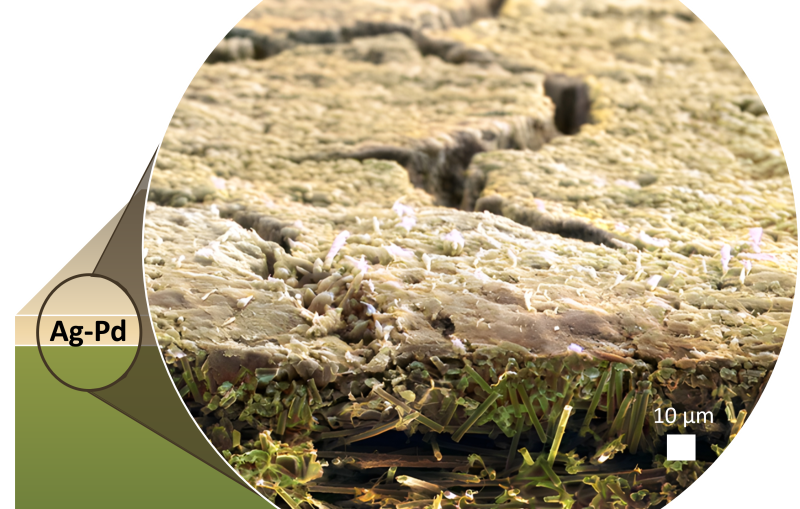Stanford graduate student Aisulu Aitbekova wins 2021 Melvin P. Klein Award
The award recognizes Aitbekova's work on catalysts, including a new catalyst that may revolutionize car emission controls.
By Jennifer Huber
Aisulu Aitbekova

Aisulu Aitbekova, a 2021 doctoral graduate from Stanford University, discovered her passion for research when she traveled from Kazakhstan to the U.S. for a summer internship as a chemical engineering undergraduate. She said that experience inspired her to go to graduate school.
After earning a master’s in chemical engineering at the Massachusetts Institute of Technology, she continued her studies at Stanford under the supervision of Matteo Cargnello, an assistant professor of chemical engineering and Aitbekova’s doctoral adviser. Much of her thesis work involved beamline studies at the Stanford Synchrotron Radiation Lightsource (SSRL) at the Department of Energy’s SLAC National Accelerator Laboratory.
Now, Aitbekova has been selected to receive the 2021 Melvin P. Klein Scientific Development Award, which recognizes outstanding research accomplishments by undergraduates, graduate students and postdoctoral fellows within three years of completing their doctoral degrees.
In a nomination letter for the award, SLAC Distinguished Staff Scientist Simon Bare praised Aitbekova’s initiative. “She has quickly become proficient in the application of X-ray techniques available at the synchrotron at SLAC. This proficiency and mastery include everything from operating the beamline to analyzing and interpreting the data,” he wrote.
Aitbekova said she felt “absolutely thrilled and grateful” to all of her mentors when she found out about winning the award.
“I’m so thankful for my PhD adviser Matteo Cargnello. My success would not have been possible without his mentorship,” Aitbekova said. “I’m also particularly grateful to Simon Bare, who I consider to be my second adviser. His continuous excitement about X-ray absorption spectroscopy has been the driving force for my work at SSRL.”
Catalyzing change
Aitbekova said she is passionate about finding solutions to combat climate change. She designs materials to convert harmful pollutant gases into useful fuels and chemicals. To perform these chemical transformations, she develops catalysts and studies their properties using X-ray absorption spectroscopy (XAS). Catalysts are substances that increase rates of chemical reactions without being consumed themselves.
“I have identified that a catalyst’s size, shape and composition profoundly affect its performance in eliminating these gases,” but exactly how those properties affect performance remains unknown, she said. “This problem is further complicated by the dynamic nature of catalytic materials. As a catalyst performs chemical transformations, its structure changes, making it challenging to precisely map a catalyst’s properties to its performance.”
To overcome these barriers, she engineers materials the size of one ten-thousandth the diameter of a human hair and then tracks how they change during reactions using XAS.
In one study, Aitbekova and her colleagues engineered a catalyst using a combination of ruthenium and iron oxide nanoparticles, which they think act in a tag-team fashion to improve the synthesis of fuels from carbon dioxide and hydrogen. Using a prototype in the lab, they achieved much higher yields of ethane, propane and butane than with previous catalysts.
Switching gears
While engineering catalysts that convert carbon dioxide into chemicals, she developed a new approach for preparing materials, where small particles are encapsulated inside porous oxide materials – for example, encapsulating ruthenium within a sheath of iron.
However, Aitbekova recognized a completely different application for this new approach: creating a palladium-platinum catalyst that works inside a car’s emission control system.
To eliminate the discharge of noxious emission gases, cars are equipped with a catalytic converter. Exhaust gases pass into the catalytic converter, where they are turned into less harmful gases. The catalysts inside these units are platinum and palladium metals, but these metals gradually lose their efficiency due to their extreme working conditions, she said.
“My platinum and palladium catalysts show excellent stability and performance after being subjected to air and steam at 1,100 degrees Celsius, the harshest operating environment automotive exhaust emission control catalysts could be subjected to,” explained Aitbekova. “Further improvements in these materials and successful testing under true exhaust conditions have a potential to revolutionize the field of automotive exhaust emission control.”
Her nominators agreed, citing it as the highlight of her graduate career.
“This work, currently under review for publication, is truly the remarkable result of Aisulu’s hard work and experience in pivoting from one area to another to make an impact and of her ability to connect multiple fields and solve important problems,” Cargnello wrote.
Amplifying impact
Despite this success, Aitbekova is already focused on how to make an even greater impact through mentoring and future research.
Her nominators all applauded her passion and commitment to mentor the next generation of STEM scholars, as demonstrated by mentoring “a countless number of undergraduates,” according to Cargnello, and by exchanging letters with middle school students from underrepresented groups.
Part of this passion, Cargnello and others wrote, stems from her experiences growing up in a highly conservative environment with the understanding that homemaking would be her eventual job. Aitbekova’s nominators wrote that they admired the fact that she made her way to Stanford and has acted as an ambassador for the values and principles of diversity and inclusion.
Aitbekova said she embraces the role. “Since my first summer research experience in the USA, I’ve wanted to serve as a bridge to science and graduate school to those who, like me, didn’t have access to such knowledge and resources.”
She will continue to act as a bridge in her next endeavor as a Kavli Nanoscience Institute Prize Postdoctoral Fellow at the California Institute of Technology, where she plans to expand her work of converting carbon dioxide into fuels by running the chemical transformations with solar energy. That will “bring society one step closer to sustainable energy sources,” she said.
Bare and others praised her drive to make an everyday impact. “She has a natural passion for wanting to understand the physical principles behind the phenomena that she has observed in her research," Bare wrote. "But this passion for understanding is nicely balanced by her desire to discover something new, and to make a real difference — the practicality that is often missing in someone early in their career.”
The award will be presented to Aitbekova at the 2021 SSRL/LCLS Annual Users’ Meeting during the plenary session on September 24.
For questions or comments, contact the SLAC Office of Communications at communications@slac.stanford.edu.
SLAC is a vibrant multiprogram laboratory that explores how the universe works at the biggest, smallest and fastest scales and invents powerful tools used by scientists around the globe. With research spanning particle physics, astrophysics and cosmology, materials, chemistry, bio- and energy sciences and scientific computing, we help solve real-world problems and advance the interests of the nation.
SLAC is operated by Stanford University for the U.S. Department of Energy’s Office of Science. The Office of Science is the single largest supporter of basic research in the physical sciences in the United States and is working to address some of the most pressing challenges of our time.





